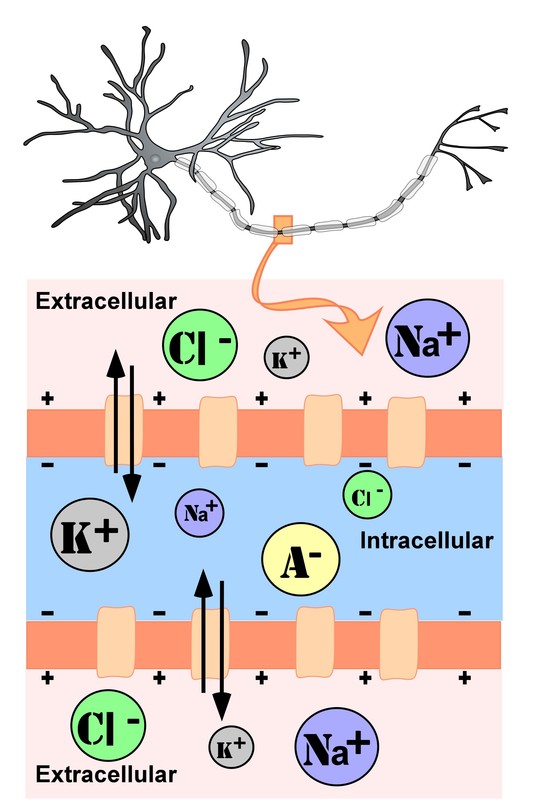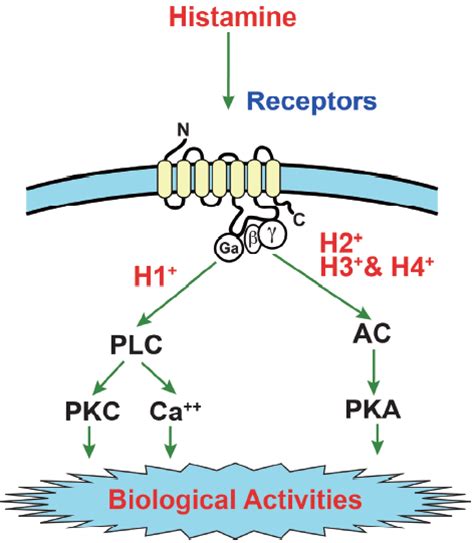Answer: Permeability to chloride ions is inhibitory and can prevent a cell from depolarizing above it’s chloride reversal potential.
From http://nobaproject.com/images/shared/images/000/002/783/original.jpg
Neurons have a negative membrane potential in comparison to the extracellular space. An average neuron rest at -70 mV, but in reality this might range from -90 mV to -60 mV. This negative charge is due to the separation of ions across the membrane. Embedded within the cell membrane are proteins that consist of a pore that allows ions to flow across the cell membrane. These transmembrane proteins are called ion channels. Many ion channels are selective for specific ions.
When an ion channel opens, ions will move across the membrane, flowing into or out of the cell. The direction the ions flow is dependent on the difference in concentration and the difference in electric charges. These two factors combined determine the reversal potential of a given ion.
For chloride ion, the reversal potential can be depolarized in comparison to the cell’s resting membrane potential. In this case, when a chloride channel opens, ions will flow to bring the cell’s resting membrane potential towards the reversal potential of the ion.
Movement of chloride ions across neuronal membranes can be both depolarizing and inhibitory. Consider a sample neuron with a resting membrane potential of -70 mV, the chloride reversal potential is set at -60 mV, and the action potential threshold is -55 mV. When a chloride ion channel opens, chloride ions will flow across the membrane, and this will bring the cell’s resting membrane potential closer towards -60 mV. In this instance, chloride is depolarizing. However, if the cell depolarizes further (through the opening of voltage gated sodium channels, for example), the flow of chloride ions will bring the cell back towards -60 mV, preventing it from reaching the action potential threshold. In this instance, chloride movement is inhibitory.
This phenomenon is described as a shunt. Instead of depolarizing charges accumulating, the charges are shunted out of the cell.
Chloride concentration is an age-dependent phenomenon. In younger animals, chloride is excitatory, while in adults chloride is inhibitory.



